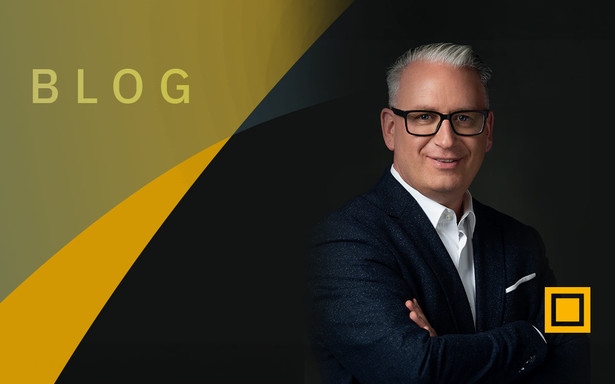By Lars Dörhage
reading time: 3 Minutes
Pope Francis in a white designer down, Donald Trump during his arrest - images that went viral and triggered a discussion about AI-generated photos. These images amused me, but also made me think and I would like to briefly touch on these thoughts in today's blog post.
Showing the head of the Catholic Church in an unusual outfit is nothing unusual in itself - in the past, it would have been called a photomontage. What is new is not the idea itself, but the realization. The "photo" was created with the help of artificial intelligence. Just like another photo that you may have come across online, because it has won an award. The "photo" has won the prestigious Sony World Photography Award. The Berlin photographer, Boris Eldagsen, submitted a picture of two women without naming the actual source. It shows a historical photograph from the 1940s of two people who do not exist and who therefore did not stand in front of the camera decades ago. The artist did not accept the prize because his intention was to trigger a discussion about AI-based photography - and he succeeded.
AI-generated photography has confirmed to us once again, and everyone has now realized that not everything we see represents reality. The excitement surrounding the AI images is already subsiding, or rather, it has been replaced by the next discussion. Instructions for recognizing fake photos are already circulating. I've read that you should pay attention to the hands, because the AI apparently has difficulties depicting five fingers realistically. And then, of course, there are the discussions about how to deal with these photos and the lack of a set of rules, which, according to reports, the EU has been working on for two years!
That is an important point for me. Natascha de Raad recently published a BLOG post on the subject of ChatGPT and called for rules. I can only agree with that. What applies to texts should also apply to photos, especially as software is improving rapidly. For example, what about mandatory labeling or the development of tools to recognize AI-generated images. How will disinformation be dealt with in the political arena? And what concerns me above all is the area of education: how do we teach children and young people to use the new possibilities in communication sensibly and to work with them? The much-discussed media literacy is not only not very widespread among the younger generation.
That's a lot of new and old questions all at once and I (unfortunately?) can't see the answers in a crystal ball. I've just had a lot of thoughts on the subject.
Here's a brief excursion into the reality of Med-X-Press. We recently had a photo shoot at the company. We always have these shoots when we need new photo material for marketing campaigns, our website or our pharmaceutical logistics letter. Anyone who has ever organized such shoots in a company knows what I'm talking about when I mention the effort involved. Such appointments usually take place during working hours in order to depict certain scenes and processes in a photo or, even more elaborately, in a moving image. It's difficult just to find a date, as the working day is already packed. Once a date has been set that also suits the photographer, the internal coordination begins. A script has to be written, employees briefed accordingly and the environment prepared. The shoot itself then usually takes a few hours, during which time operations have to continue. I don't even have to mention the countless considerations and discussions about motifs and moves.
Why do we do this? Because we want to have authentic photos from our company, from the different areas with our employees, face-to-face. We want to be who we are and not score points with flawless, bought shots. In short: our images are genuine.
However, I don't want to categorically rule out the possibility that AI-based photography or video clips could be useful in some areas, for example for animating future work processes.
But we should (quickly) learn how to use them appropriately. To do this, we need guidelines and the willingness to rewrite our mind-set. A task that affects us all. It is said: "Just as we had to learn to google, we now have to learn to prompt." Prompting defines the ability of AI to convey the "right" keywords in order to achieve an optimal result. And there is already a suggestion for a name for the new genre of photography: instead of photography, the artificially produced image is called promptography.
Regardless of what the child will be called, we are keeping a very close eye on developments and are calling for a set of rules - and advocating a balanced "peaceful coexistence".
What do you think about fake photos? Let's discuss it. Write to me: blog@med-x-press.de


![[Translate to English:] Auszeichnung ecovadis [Translate to English:] Auszeichnung ecovadis](/fileadmin/user_upload/Footer/mxp-pharmalogistik_auszeichnung_ecovadis.png)